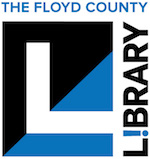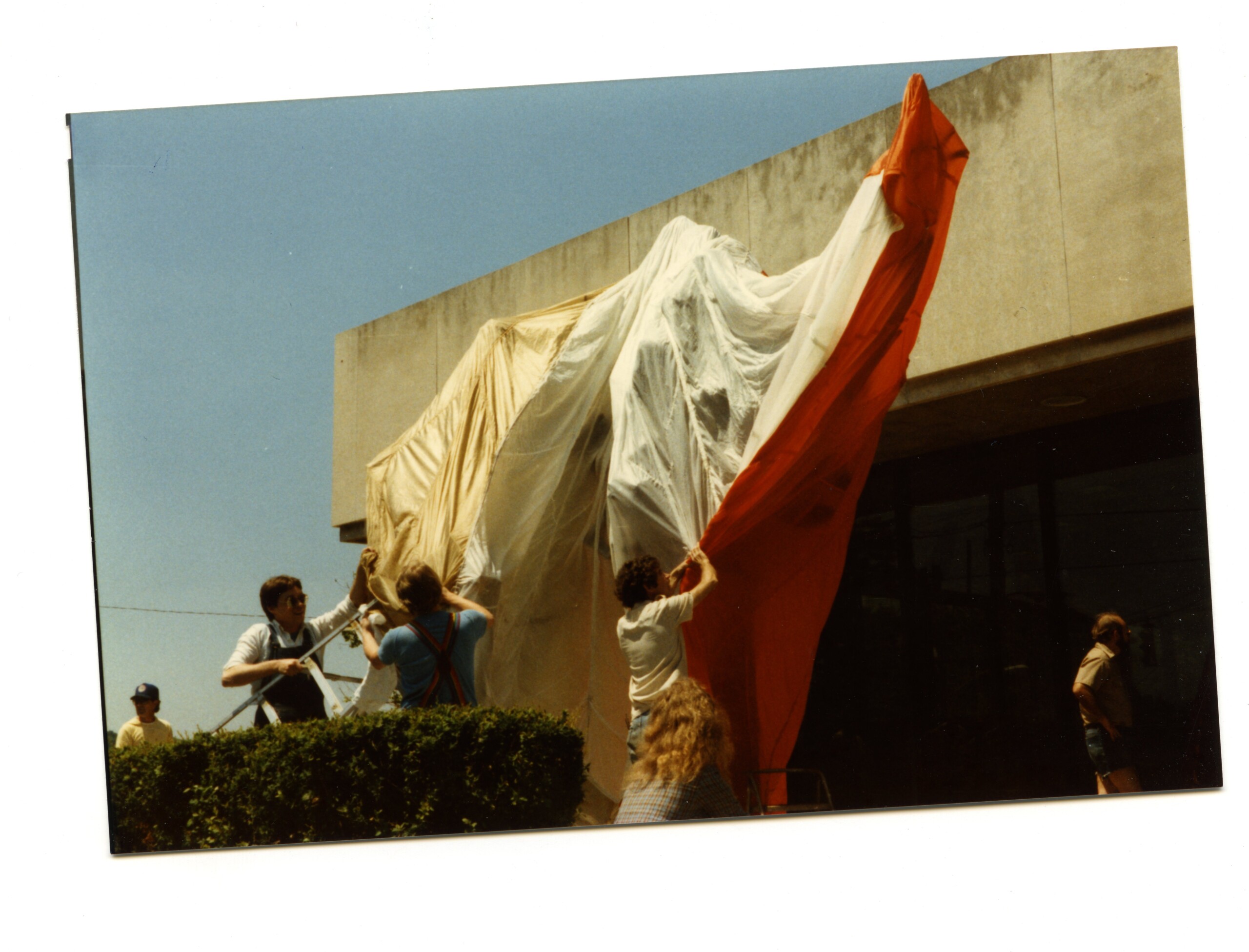With a workman helping from the library’s roof and balloons flying high, Barney Bright’s favorite artwork, The Search, was unveiled in a public celebration. That happened on May 11, 1985 and was the culmination of an eight year process to place a significant new public artwork at the library in downtown New Albany, IN.
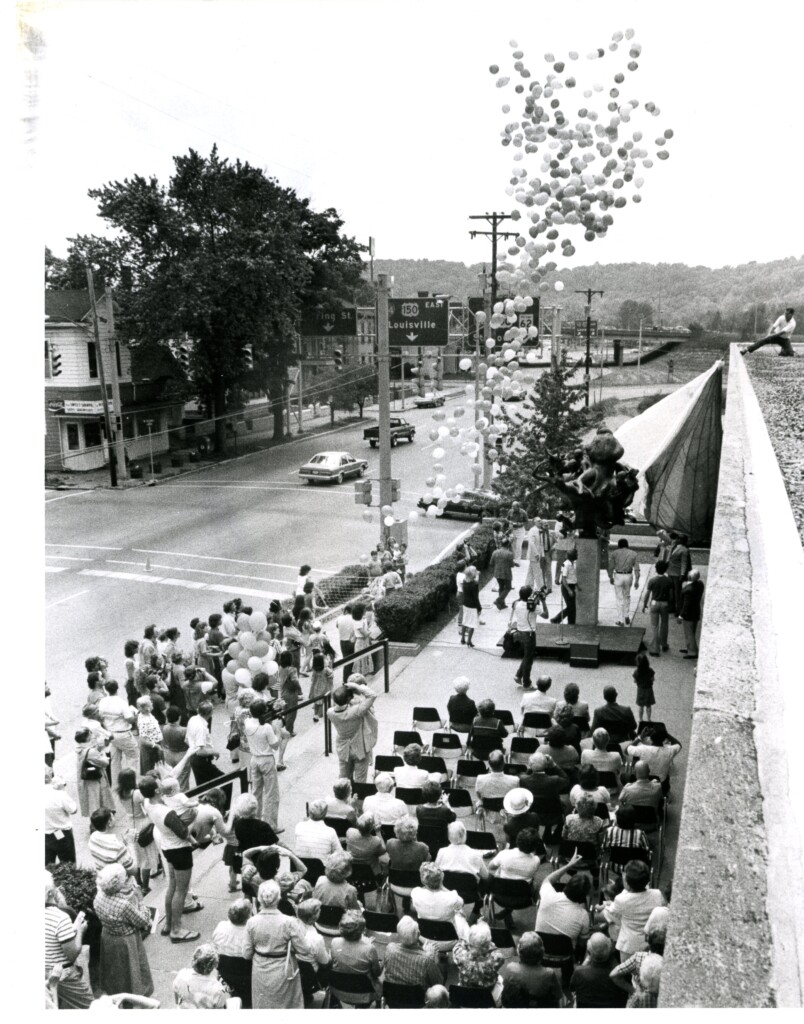
Public Dedication of The Search, May 11, 1985.
The project began with the New Albany-Floyd County Public Library Art Committee wanting to commission a work of art to be placed near the new library that had succeeded the old Carnegie Library a few blocks down on Spring Street. The committee recognized that New Albany was ready for such an amenity that would help instill community pride and a sense of place in a way good public art can. The choice of Barney Bright was an important one to the committee because Barney had worked at Bruce Fox Inc. and had other local Indiana ties.
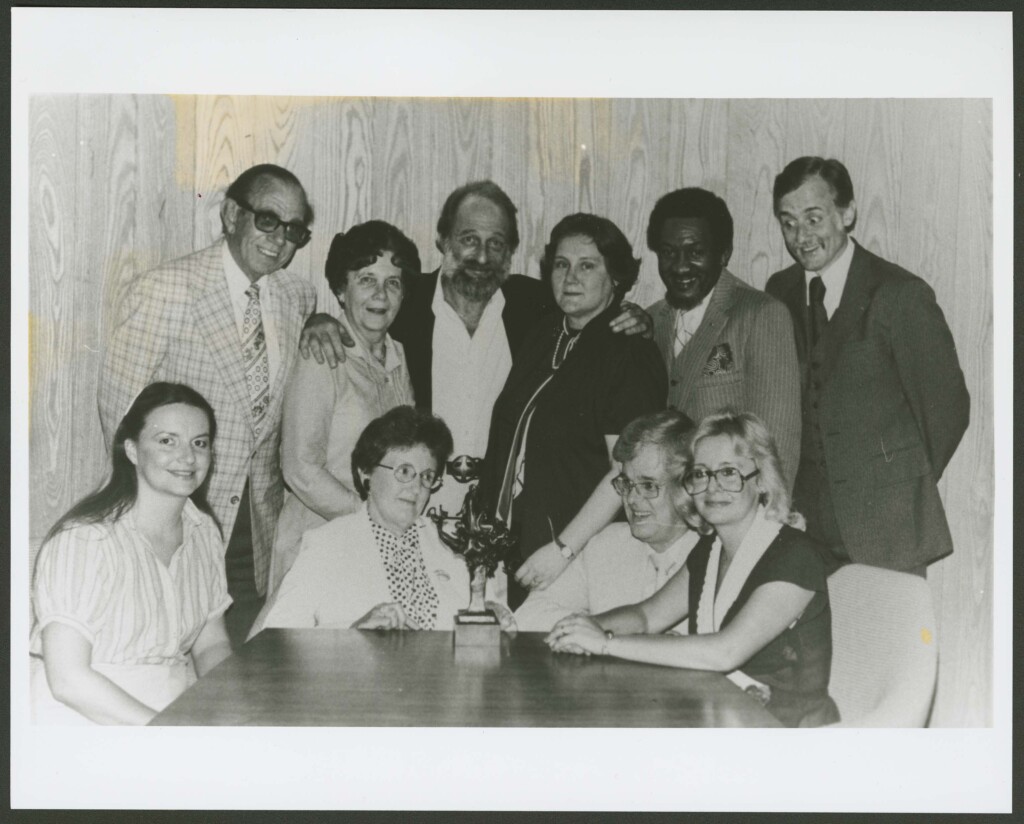
Barney Bright, center, with New Albany Floyd County Public Library Trustees, ca. 1977.
Among those represented on the original New Albany-Floyd County Public Library Art Committee that came calling to Bright’s Louisville studio included: Byron Drumb, Dottie Oakes, Molly Bundy, Robert Mitchell, David Habermel, Linda Leist, Donna Wolfe, and John Gray, and the Library Director at the time was Mona Leitner. As the project drew to a close, Robert Applegate, Mary Lou Hess, and James Russell became involved with the art committee.
Barney had an idea already in mind when the committee approached him in 1977 with $1500 in seed money in hand. It was important to the committee that no tax dollars were used in its creation and they were successful in that goal. The agreed upon price was $46,000, which was never renegotiated, and took many years to raise although foundry costs were surely going to go up. Barney understood this more than most because in addition to being the artist of record, he also represented the foundry that would fabricate the finished sculpture!
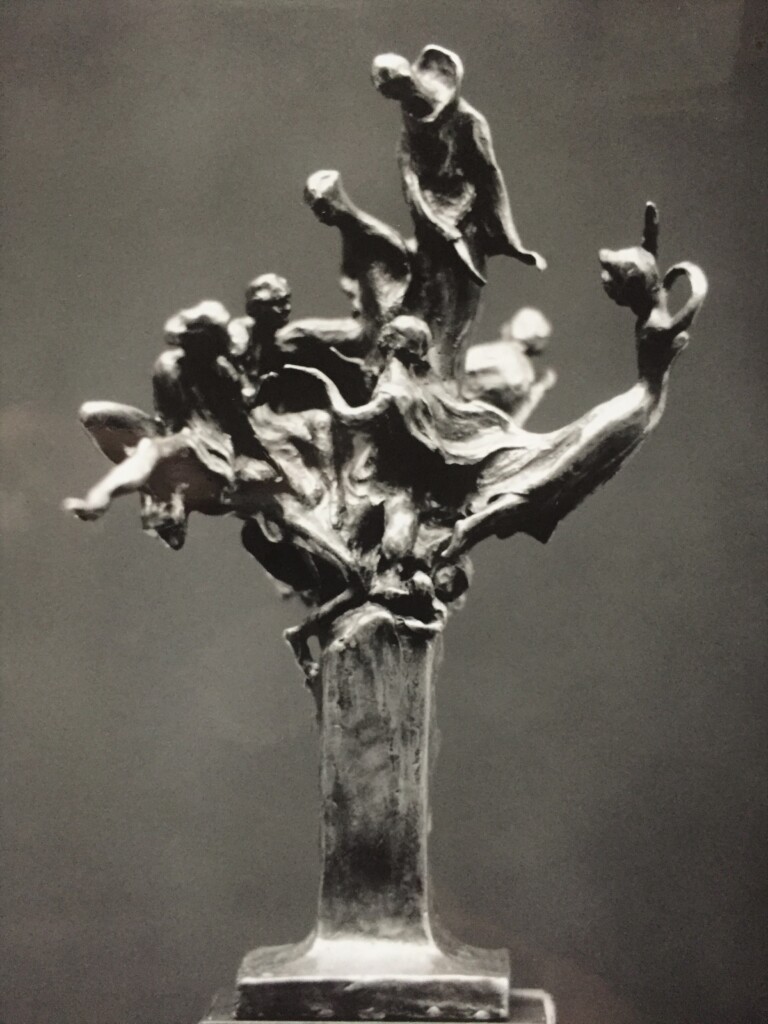
The People Tree concept by Barney Bright
Artists are often not the best business people and Barney freely admitted that. For Barney, the chance to make something this potentially big and personal outweighed how much money he was going to earn on this project. Back in 1974, he had been approached by a Louisville bank for a major street level monument. Bright had been working on a number of pieces that referenced spreading, tree-like forms and his proposal for the bank was called The People Tree. The bank passed on the project, but Bright kept his model on his studio shelf and hoped for another opportunity to bring it to realization. When the library art committee came he showed them The People Tree which they liked. He renamed the piece The Search after adapting his original composition to better fit with the new library’s architecture.
The Search as a finished object, weighs 3,000 pounds hollow and is thirteen feet long, eight feet high, and seven feet wide and was made by the “lost wax” process. It is a three dimensional, bronze jigsaw puzzle of over 130 individual bronze pieces that required molds and wax patterns that were cast, hammered, and welded into place, chased, and filed of all the joining seams, sand-blasted, and given a golden brown patina and waxed to help unify and protect its surface. The process of producing bronze art is a fascinating one. Here is a simple YouTube explanation on the Lost Wax Casting Process.
Working alongside Barney on The Search were his son, Jep Bright (he would later run the foundry his father started) and David Lind a southern Indiana native who would fashion his own career crafting bronze funerary monuments and animal art. For both Lind and Bright, working on The Search would be the learning experience of a lifetime. It’s amazing how much the technology in bronze art production has improved since The Search and while it is easier to produce, is also still very costly. The bronze used in The Search alone would cost about $100,000 in today’s money and would not take into account other foundry costs or the artist’s design work. As it turns out, The Search was a bargain, even for the times.

So what does The Search mean? Bright has left us a great quote about this work. This is from a May 5, 1995 Courier-Journal interview with art reviewer, Diane Heilenman, just prior to the public unveiling Barney said:
Different people see different things in it. But that’s what I wanted to happen—to leave the figures up to the people’s imagination. It’s a constant search to find yourself, to find a mate, to find God. Isn’t that what life is all about? You keep searching until you find a partial answer that keeps you searching for more answers.
This was Bright’s favorite work because it allowed him to combine eleven figures into one grand allegorical composition on the meaning of life. The figures are in various emotional and physical states ranging from active conflict to repose. Bright included a self-portrait, balding and with a beard that is at the top central position of the sculpture. He imagined himself as a storyteller he called The Old Philosopher that he would later cast as a separate work of art late in life.
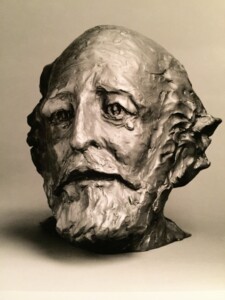
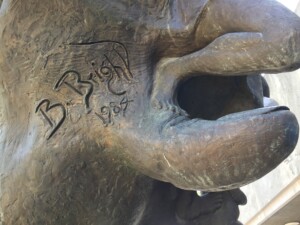
The Search became less of a tree and more a giant ball of clay in an expressive artist’s hands. Bright could create a resemblance in the short time it took to have a conversation with you. A large bronze thumb near the artist’s signature gives the sense that life and meaning are ever changing and being formed. Bright felt that The Search was especially appropriate to be in front of a library and he wanted to keep its meaning open. Nearly 35 years later, we are being challenged in this moment to find its meaning. When it passes, the Floyd County Library will be there, and The Search for everyone will continue again.
Al Gorman, Coordinator of Public Programs and Engagement
Carnegie Center for Art and History, A Branch of the Floyd County Library
April 23, 2020
